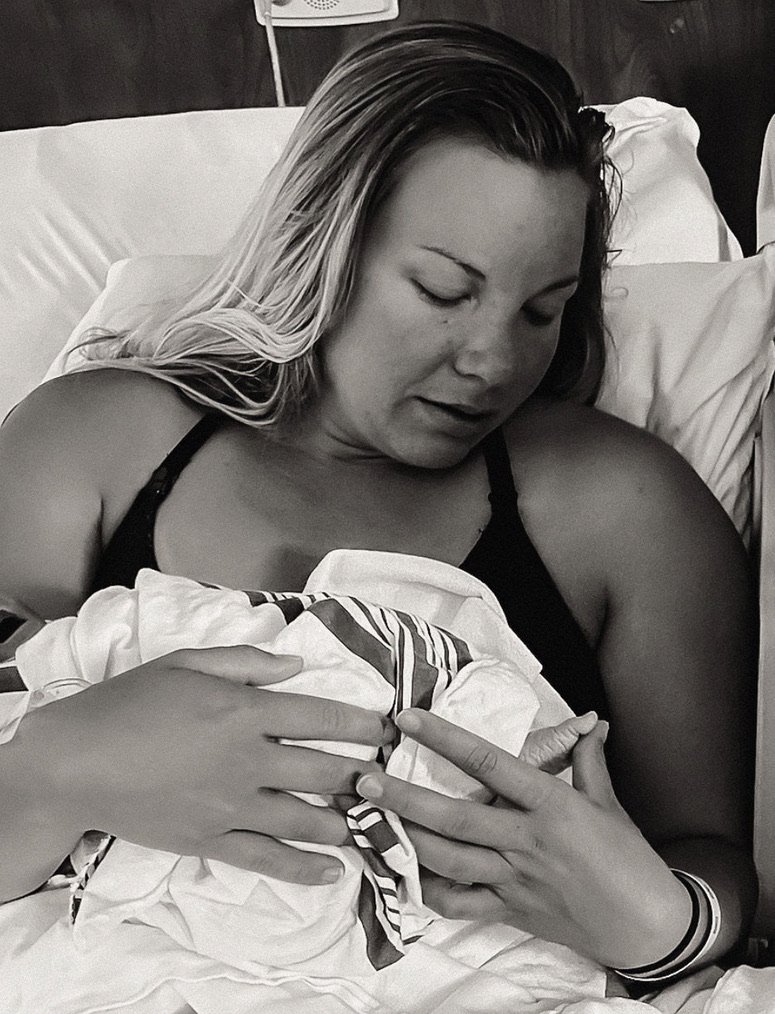Postpartum After Stillbirth
Postpartum after stillbirth can feel like a very lonely and dark time. You are consumed in grief, in pain physically and emotionally and full of questions. There is a fog over your thoughts and nothing makes sense.
Returning to movement seems like the last thing you want to do after stillbirth. But gentle and intentional movement can help to ease physical discomfort and let some emotional healing wiggle in as you learn to breathe again.
How Long Does It Take to Recover from Stillbirth?
There is no clear timeline as it will be different for everyone and we must consider the different types of deliveries. An emergency c- section will have a different recovery from someone who had a vaginal delivery. The physical body will recover faster than if a baby were with us because we are not holding a baby all day, nursing and caring for demands all day long. This is an unfair reality but a consideration in terms of physical recovery. This means that a woman who has experienced a stillbirth may feel up to returning to movement and exercise sooner than what is commonly seen, but just because the first few weeks may be a bit quicker it does not negate the fact that she carried a baby through pregnancy, labor and delivery.
Generally women are told it takes twelve to eighteen months for a woman's body to return to baseline after a pregnancy. But many women who suffered a stillbirth are given the ok to begin trying to conceive again after their six week postpartum appointment. I understand the reason behind this but it can be very hard on a healing body. Allowing some time to heal the physical body and the emotional trauma can allow for a much needed pause for the body and mind before trying to conceive again. This also doesn't take into account the women that struggle to conceive after stillbirth and trying to conceive before the body is ready may send women down an even darker spiraling hole of sadness and loss. This is why I wrote my program from day one after loss to six months postpartum. This allows the body to move and heal and create a foundation of movement before trying to conceive again. Six months should also allow time for a woman’s cycle to regulate and be ready to try to conceive again. This will always be different for each woman. I personally did not get a regular cycle back until 16 months after my own stillbirth. Some things unfortunately really just need time to heal.
What Happens to Your Body After Stillbirth?
It’s easy to think or maybe you’ve been told that your body will recover just like any other woman who had a baby but the reality is that stillbirth is different on so many levels. There is trauma and shock to contend with. Those things don’t just disappear after you stop bleeding. Beyond the fact that giving birth to a baby you will not bring home, many women suffer a traumatic birth whether it was an emergency c- section, placental abruption, or septic shock. These are things that you don’t just recover from on a traditional timeline.
Trauma lives in the body. Trauma pushes the system out of its normal function and beyond a point where it can immediately self-regulate. This is a normal response in the face of deep trauma and it may be difficult to simply turn it off because the psyche has been deeply traumatized. The trauma response is often evident in our bodies through tight or rigid muscles, always feeling achy or tired, inability to sleep, vivid nightmares, chronic fatigue, pain, or persistent headaches. You may also notice an increase in injuries and difficulty healing those injuries.
You may also get injured with no explicable reason as to why or how you became injured. The body stays in this state of overstimulation in an effort to protect itself, but it is debilitating in the long term. The parasympathetic nervous system often needs help to return the body to homeostasis and retrain the brain’s current patterned response to trauma and daily triggers.
How Does Stillbirth Affect the Mother?
Mothers are heavily impacted by stillbirth. The trauma for the delivery and loss of a child runs deep. Many women will seek counseling and join support groups to help manage the shock of this new reality and to monitor their mental health closely. It is important for women to connect with others who have been through this loss because it can be hard to relate to others in their life who have not experienced the loss. It can be a very lonely time so a solid support system is very important.
Learning trauma triggers can help navigate the days more easily and allow for returning to daily activities a little easier. It is another unfair reality that this loss likely removed you from friends and activities that you really enjoyed doing before. There are many reminders in triggers in all the things that you did before loss. It is yet another thing to be grieved after the loss.
Do You Ever Really Recover from Stillbirth?
10 days after loss working to ground myself within the grief.
Physically you will. The body can heal but it will never forget. The trauma will live in your body forever but it can be soothed and nurtured. We can do things like body work with fascial release and lymph work to help move the grief. Bringing intentional body work into our exercise routines can help the trauma and grief subside in the body. But there will always be a potential that an especially triggering event can bring on the somatic grief response to the body again. It can present as an achy and tired body, sleep problems, nightmares, headaches or an entirely new and painful injury.
It is important to know this and be aware so that if and when it does happen in your future to give your body grace as it too, works through the trigger that has resurfaced the deep trauma. Allowing it the respect it deserves will help the grief and trauma move out more seamlessly. I know it can feel very frustrating but it’s just a way for the body to protect itself.
The Recovery After Loss Program
The Recovery After Loss Program was created to cover all of these points completely in a totally trigger free program. It is a safe place for mothers who still need to recover their postpartum body after stillbirth all while navigating trauma, triggers and deep grief that heavily impacts the recovery journey. We cannot heal our bodies without also addressing our emotions and soothing and preparing our bodies to move into recovery first.
This six month program will walk you through the early four weeks of healing foundation breath work, what the pelvic floor is and how to heal it and begin to process out loud what just happened to you. Through the remainder of the program you will see three workouts a week and every few weeks an introduction of higher demand movements like jumping, running and high impact exercise. This program is a one stop shop for everything that you need to know and do to heal and recover your postpartum body after tragic pregnancy or infant loss.
Postpartum after stillbirth is truly a journey, I am here to help you walk through it.
Love,
Bree + Rainey
Head to the Recovery After Loss tab to purchase today! 


